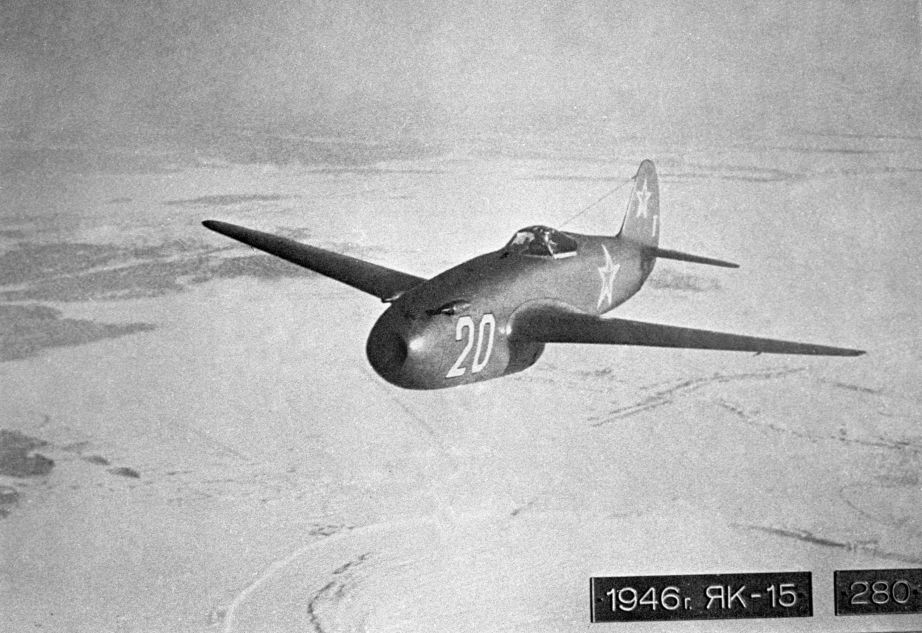On 24 April 1946, the first Soviet jet fighters – MiG-9 and Yak-15 – test flights took place. At the end of 1944, Germany, Great Britain, and the United States already had fighter jets, and the Allies were mass-producing them. After examining German aircraft captured during and after the war, the USSR instructed its leading Soviet design bureaus to focus on designing jets.
Soviet scientists and designers did not copy German technology; however, they did put German engines into operation and started serial production. In April 1945, the A.S. Yakovlev Design Bureau was ordered to develop a jet aircraft with a Jumo-004 engine. It was based on the Yak-3 model, but a jet engine replaced the piston engine.
The Soviet Mikoyan and Gurevich Design Bureau developed two jet fighter projects – the I-260 and I-300. The former’s blueprints copied the German Me.262 fighter: it had two engines located under the wing. While the I-300 had a “redan” scheme – a power plant was located in its fuselage.
Subsequently, the I-260 twin-engine prototype was abandoned. The modified I-300 prototype was mass-produced and entered service as the MiG-9, which became the first Soviet fighter with a turbo jet engine.
On 24 April, the Yak-15 jet fighter was tested in the air. The model, along with the Yak-17 and MiG-9 – the first Soviet serial jet fighters – had an airframe similar to WWII-era piston-engined combat aircraft.
Source:
Vadim Shavrov “History of aircraft designing in the USSR 1938-1950”
























